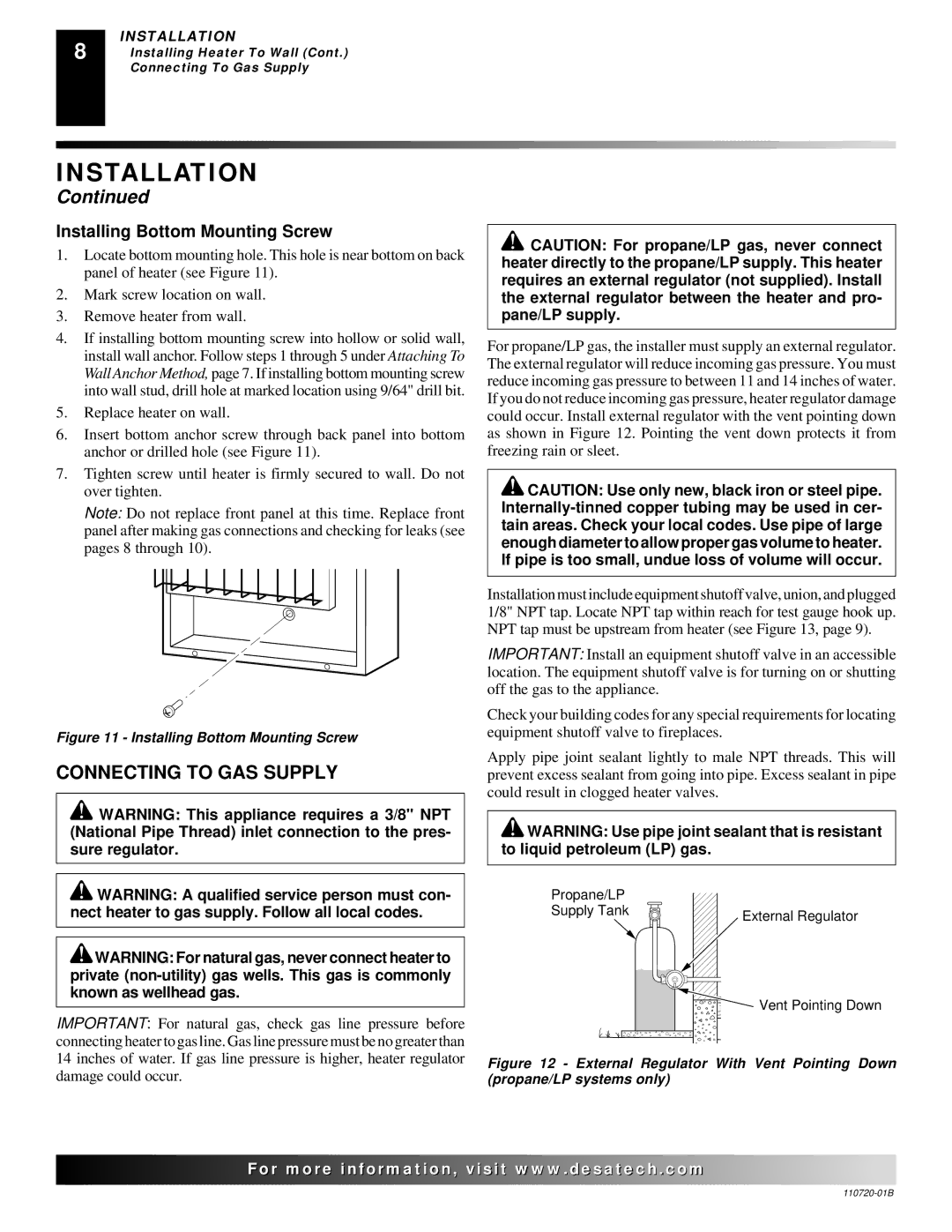VP10TA VN6D, VP10A VN10TA specifications
Desa VP10A, VN10TA, VP10TA, and VN6D are noteworthy models in the realm of cutting-edge technology, designed to cater to modern industrial and consumer needs. Each model boasts unique features and characteristics, making them suitable for various applications.The Desa VP10A is recognized for its robust performance and high reliability. It typically includes advanced air filtration systems that ensure optimal air quality while maintaining efficient operation. Its energy-efficient design minimizes power consumption without compromising performance, making it an environmentally friendly choice. This model often incorporates user-friendly controls, allowing for effortless adjustments and monitoring of operations.
Moving on to the VN10TA, this unit excels in terms of versatility and adaptability. It is built with a modular design, allowing users to customize the configuration based on specific requirements. This feature enhances its applicability across different sectors, such as manufacturing and logistics. The VN10TA also integrates sophisticated connectivity options, enabling seamless integration with existing systems while providing data analytics capabilities for better operational insights.
The VP10TA model places a strong emphasis on performance efficiency. It includes state-of-the-art technologies such as variable speed drives, which optimize energy use and enhance overall system performance. Moreover, the VP10TA is often equipped with smart sensors that monitor operational parameters in real time, ensuring maximum efficiency and longevity of the unit.
Lastly, the VN6D model stands out with its compact design, perfect for environments with space constraints. Despite its smaller footprint, the VN6D does not compromise on power or efficiency. The unit is designed for quick installation and maintenance, streamlining processes in busy settings. Additionally, it incorporates noise-reduction technologies, making it an excellent choice for applications in noise-sensitive areas.
All models feature high-quality construction materials, ensuring durability and resistance to wear and tear, which is critical in demanding environments. The combination of innovative features and superior technologies in the Desa VP10A, VN10TA, VP10TA, and VN6D makes them valuable assets for any industrial or commercial setup, effectively catering to the intricate demands of today’s economy. Their exceptional performance, adaptability, and efficiency are testaments to Desa's commitment to quality and innovation in technology.

